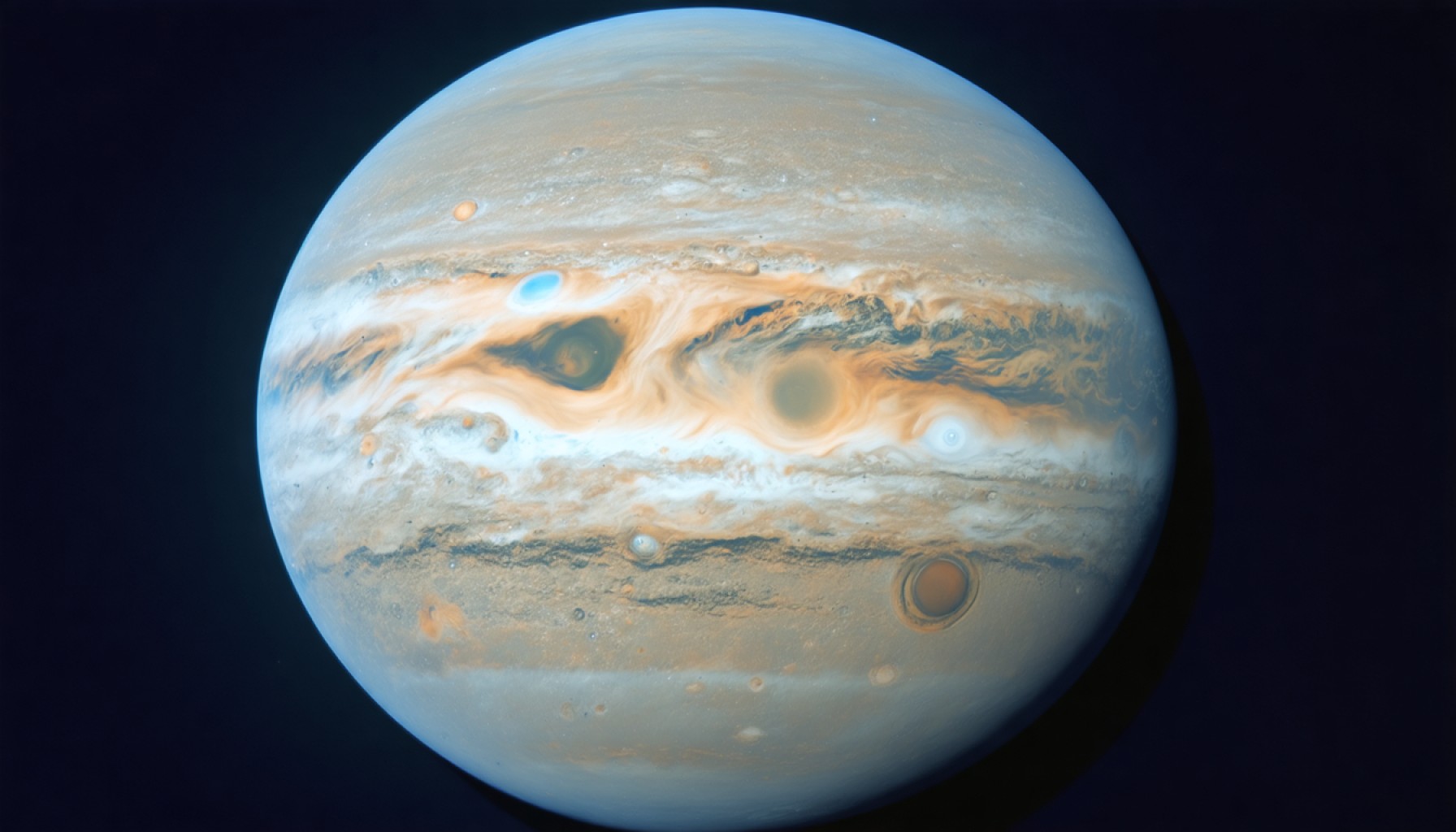- K2-18b, an exoplanet in the constellation Leo, intrigues scientists with the possibility of alien life.
- Situated in the “Goldilocks zone,” its conditions are potentially suitable for liquid water and life.
- The planet is classified as a Hycean world, boasting a hydrogen atmosphere and extensive ocean surfaces.
- Recent data from the James Webb Space Telescope reveals methane and carbon dioxide, potential biosignatures, in its atmosphere.
- Astronomers remain cautious, recognizing these signals could also arise from unknown natural processes.
- K2-18b’s significant mass and size liken it to a “sub-Neptune,” offering unique study opportunities not found in our solar system.
- The quest for extraterrestrial life extends beyond K2-18b to include efforts on Mars, Europa, and through SETI’s search for cosmic signals.
A colossal enigma twinkles in the constellation Leo, known by astronomers as K2-18b. Suspended over 120 light-years away from our blue planet, K2-18b is not just any exoplanet; it holds the tantalizing promise that we may not be alone in the universe. Recent observations using NASA’s James Webb Space Telescope have ignited a cosmic curiosity by unveiling atmospheric clues that could point to alien life—life that might mirror the microbial denizens of Earth’s oceans.
Picture K2-18b: a mystical world orbiting a red dwarf star, residing comfortably in the so-called “Goldilocks zone,” where conditions are just right for liquid water to exist. This exoplanet is categorized as a Hycean world, a planet type with a rich hydrogen atmosphere and vast ocean surfaces, much like Neptune but cloaked in mystery and potential.
The detection of carbon-bearing molecules, including methane and carbon dioxide, in K2-18b’s atmosphere propelled this distant world into the spotlight. Such molecules, especially when appearing in specific chemical “biosignatures,” could indicate life processes. But the cosmos often plays tricks, and the dances of chemistry that mimic life make astronomers tread cautiously. These enigmatic signals might result from unknown natural processes or the whims of cosmic happenstance.
K2-18b’s allure is magnified by its sheer magnitude—8.6 times the mass of Earth and boasting a radius 2.6 times greater than our planet. These metrics position K2-18b as a “sub-Neptune,” a class not present in our solar system but abundant in our galaxy. Its hefty size likely conceals a high-pressure icy mantle, a parallel to the gassy giants in our cosmic backyard.
This celestial dance with the unknown is far from over. Astronomers stand ready, poised to further investigate with the Webb telescope, inching closer to peeling back the layers of this otherworldly onion. Their mission: to uncover whether the biosignatures betray true life or are an enthralling cosmic illusion.
Beyond K2-18b, humanity’s quest to decode the secrets of life stretches across the celestial plains. Mars, with its dusty valleys and icy caps, undergoes relentless probing from rovers eager to reveal past lives. Europa, one of Jupiter’s many moons, awaits a 2030 rendezvous with NASA’s Europa Clipper spacecraft, which will dig into its frozen crust in hopes of finding hidden seas brimming with potential life.
Yet, as we strain our eyes to the heavens, another beacon, the Search for Extraterrestrial Intelligence (SETI) Institute, expands the frontier beyond our galaxy. With ears attuned to cosmic whispers, SETI seeks the broadcasted signals of technologically advanced beings. This intricate dance with destiny unfolds in labs, among gaping telescopes, and in the imaginations of countless stargazers.
Our ancient question remains unanswered, but with every new discovery, the possibility that life finds a way—somewhere, out there—brightens like a star in the vast, dark theater of the sky.
Is There Life on K2-18b? Unveiling the Mysteries of a Potentially Habitable Exoplanet
Exploring the Potential of K2-18b
K2-18b, a fascinating exoplanet nestled in the constellation Leo, has captured the attention of astronomers worldwide. This extraterrestrial body, larger than Earth but smaller than Neptune, is located over 120 light-years away. It orbits a dim red dwarf star in the habitable “Goldilocks zone,” the region around a star where conditions might be just right for liquid water to exist—a crucial ingredient for life as we know it.
Key Characteristics of K2-18b
K2-18b’s allure lies not only in its positioning but also in its classification as a potential Hycean world. These newly theorized planets possess hydrogen-rich atmospheres and ocean-covered surfaces, raising tantalizing possibilities for hosting life. The exoplanet is approximately 8.6 times more massive than Earth and has a radius 2.6 times larger, distinguishing it as a “sub-Neptune.” Such planets are common in our galaxy yet absent from our solar system, fueling intrigue about their nature and potential.
Atmospheric Discoveries with the Webb Telescope
The James Webb Space Telescope’s recent findings have further cemented K2-18b’s prominence in the search for extraterrestrial life. Scientists detected carbon-bearing molecules, such as methane and carbon dioxide, in its atmosphere. These molecules could serve as biosignatures—chemical indicators of life processes. However, astronomers remain cautious, recognizing that non-biological processes might produce these molecules too.
Challenges and Considerations
While the discovery of atmospheric compounds is promising, several challenges persist in confirming life on K2-18b. Unraveling whether these molecules signify biological processes or result from natural non-biological phenomena is complex. Furthermore, the immense pressure and temperatures in the presumed ocean could differ significantly from conditions on Earth, influencing the potential development of life.
Comparisons and Industry Insights
K2-18b isn’t the sole focus of extraterrestrial exploration. Projects like NASA’s Europa Clipper mission aim to investigate other celestial bodies within our solar system. Europa, one of Jupiter’s moons, is another candidate for harboring life due to its subsurface oceans. Simultaneously, the Search for Extraterrestrial Intelligence (SETI) Institute listens for potential signals from advanced civilizations beyond our planet.
Actionable Steps to Stay Informed
As our understanding of the universe expands, here are some recommendations to remain engaged with these cosmic explorations:
1. Stay Updated: Follow updates from NASA and other space agencies about missions and discoveries related to exoplanets and potential signs of life.
2. Engage with Community: Participate in astronomy clubs or online forums to discuss new findings and theories with fellow enthusiasts.
3. Contribute to Citizen Science: Projects like Galaxy Zoo offer opportunities to assist professional astronomers in analyzing data, fostering a more profound engagement with celestial research.
4. Educate and Advocate: Share knowledge about the importance of space exploration in understanding our universe and potentially finding alien life.
Related Resources
– For more on NASA’s missions and discoveries, visit the official NASA website.
– To explore the contributions of the SETI Institute, check out the SETI website.
While definitive answers remain elusive, the search for life on K2-18b and beyond continues to inspire scientists and dreamers alike. The quest to uncover whether we’re truly alone is a journey that propels humanity to probe deeper into the cosmos, one discovery at a time.









